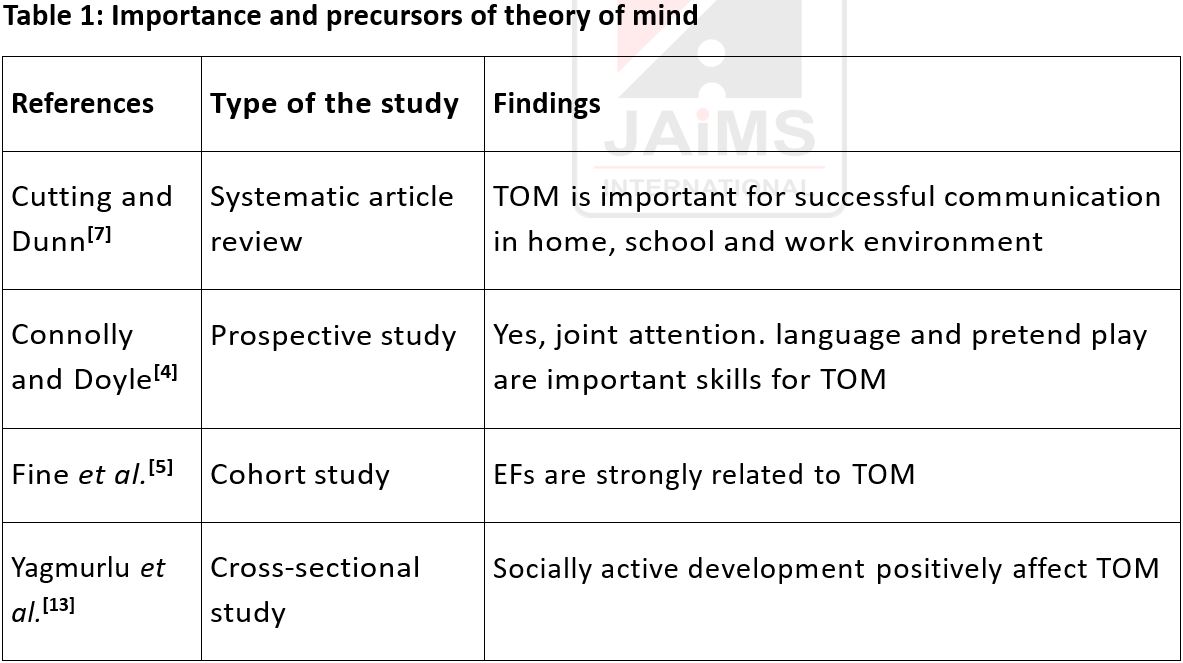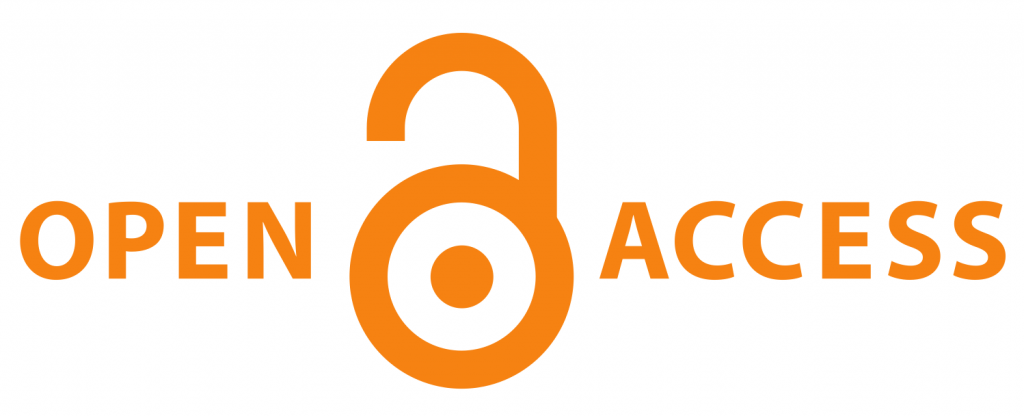Application of Concept of Theory of Mind in Understanding Neurodevelopmental Disorders
DOI:
https://doi.org/10.21760/jaims.10.7.24Keywords:
Neurodevelopmental, Theory of Mind, Ayurveda, Autism ADHDAbstract
Theory of mind impairments is seen in various neurodevelopmental disorders. Neurodevelopmental disorders are impairments of the growth and development of the brain or central nervous system. This also refers to the disorder of brain function that affects emotion, self-control, learning ability, and memory and that unfolds as the individual grows. India faces a great burden of neurodevelopmental disorders due to dual challenge of genetic and acquired disease burden posed by nutritional, infectious, toxic, and traumatic insults. Various neurodevelopmental disorders, such as autism spectrum disorders, attention deficit hyperactivity disorder, developmental language disorders as well as acquired disorders of the right brain (and traumatic brain injury) impair Theory of mind. Theory of mind in everyday parlance is one of the subcomponents of social cognition, which embraces all the skills required to manage social communication and relationships in humans. Impairment of Theory of mind ability is often seen in children even in cases with a normal or high level of intelligence and other cognitive abilities. Ayurveda implies that whatever affects the body has its effects on the mind and vice versa. When critically viewed the Manovishayas like Chintya, Vicharya, Oohyam play a key role in the thought process, aim fixing, task completion and other behavioural patterns. Thus, eccentricity of Manovishayas can lead to behavioural abnormalities like Manovibrama, Budhivibrama, Anavasthithachithatwa, etc. Hence, the study of connections between fundamental neurophysiological mechanisms and highly complex social behaviour, such as Theory of mind which will enable us to better understand the respective roles of innate predisposition and cultural learning in human life. Studies in the social, cognitive, and affective sciences currently seem to be the most fruitful approach to successfully contrasting both the mind body dualism which is an integral part of Ayurveda in understanding the neurodevelopmental disorders.
Downloads
References
Flavell JH, Dammeyer J. Psychosocial development in a Danish population of children with cochlear implants and deaf and hard-of-hearing children. J Deaf Stud Deaf Educ. 2010;15:50–8.
Baron-Cohen S. Theory of mind in normal development and autism. J Pris. 2001;34:174–83.
Frith U, Frith CD. Development and neurophysiology of mentalizing. Philos Trans R Soc Lond B Biol Sci. 2003;358:459–73.
Connolly JA, Doyle AB. Relation of social fantasy play to social competence in preschoolers. Dev Psychol. 1984;20:797–806.
Fine C, Lumsden J, Blair RJ. Dissociation between theory of mind and executive functions in a patient with early left amygdala damage. Brain. 2001;124:287–8.
Doherty MJ. Theory of mind: how children understand others' thoughts and feelings. New York, NY: Psychology Press; 2008. p.1–245.
Cutting AL, Dunn J. Theory of mind, emotion understanding, language and family background: individual differences and interrelations. Child Dev. 1999;70:853–65.
Spence SA, Hunter MD, Farrow TF, Green RD, Leung DH, Hughes CJ, et al. Deception: evidence from neuroimaging. Philos Trans R Soc Lond B Biol Sci. 2004;359:1755–62.
Malecki CK, Elliot SN. Children's social behaviors as predictors of academic achievement: a longitudinal analysis. Sch Psychol Q. 2002;17:1–23.
Moor S. Asperger syndrome and the elementary school experience. Shawnee Mission, KS: Autism Asperger Publishing Company; 2002.
Korkmaz B. Theory of mind and neurodevelopmental disorders of childhood. Pediatr Res. 2011;69:1–13.
Kloo D, Perner J. Training Theory of Mind and Executive Control: A tool for improving school achievement? Mind Brain Educ. 2008;2:122–7.
Yagmurlu B, Berument SK, Celimli S. The role of institution and home contexts in theory of mind development. Appl Dev Psychol. 2005;26:521–37.
Baron-Cohen S, Leslie A, Frith U. Does the autistic child have a 'theory of mind'? Cognition. 1985;21:37–46.
Saeedi MT, Noorazar SG, Bafandeh H, Taheri M, Taheri S. Theory of mind in children with attention deficit hyperactivity disorder compared to controls. Anal Res Clin Med. 2014;2:99–104.
Dammeyer J. Psychosocial development in a Danish population of children with cochlear implants and deaf and hard-of-hearing children. J Deaf Stud Deaf Educ. 2010;15:50–8.
Hughes C, Leekam S. What are the links between theory of mind and social relations? Reflections and new directions. Soc Dev. 2004;13:590–619.
Westby C, Robinson L. A developmental perspective for promoting theory of mind. Top Lang Disord. 2014;34:362–82.
Premack DG, Woodruff G. Does the chimpanzee have a theory of mind? Behav Brain Sci. 1978;1:515–26.
Wimmer H, Perner J. Beliefs about beliefs. Cognition. 1983;13:103–28.
McGlmaery ME, Ball SE, Henley TB, Besozzi M. Theory of mind, attention, and executive function in kindergarten boys. Emot Behav Diff. 2007;12:29–47.
Bartsch K, Wellman H. Children talk about the mind. New York, NY: Oxford University Press; 1995.
David P, Guy W. Does the chimpanzee have a theory of mind? Behav Brain Sci. 1978;1:515–26. doi:10.1017/S0140525X00076512.
Gordon RM. Folk psychology as simulation. Mind Lang. 1986;1:71–158.
Miller CA. Developmental relationships between language and theory of mind. Am J Speech Lang Pathol. 2006;15:142–54.
Muris P, Steerneman P, Meesters C, Merckelbach H, Horselenberg R, van den Hogen T, et al. The TOM test: a new instrument for assessing theory of mind in children. J Autism Dev Disord. 1999;29:67–80.
Saxe R, Powell LJ. It’s the thought that counts: specific brain regions for one component of theory of mind. Psychol Sci. 2006;17:692–9.
Sperber D, Wilson D. Relevance: communication and cognition. Cambridge, MA: Harvard University Press; 1986.
Caillies S, Bertot V, Motte J, Raynaud CH, Abely M. Social cognition in ADHD: irony understanding and recursive thinking. Dev Disabil Res Rev. 2014;35:3191–8.
Farrant BM, Maybery MT, Fletcher J. Language, cognitive flexibility, and false belief understanding in development and impairment. Child Dev. 2012;83:223–35.
Green MF, Penn DL, Bentall R, Carpenter WT, Gaebel W, Gur RC, et al. Social cognition in schizophrenia: an NIMH workshop. Schizophr Bull. 2008;34:1211–20.
Kasari C, Freeman S, Paparella T. Early intervention in autism: joint attention and symbolic play. In: Glidden LM, editor. Int Rev Res Ment Retard. New York, NY: Academic Press; 2001.
Appleton M, Reddy V. Teaching three-year-olds to pass false belief tests: a conversational approach. Soc Dev. 1996;5:275–91.
Perner J, Leekam SR. The curious incident of the photo: specificity in autism and brain imaging. Q J Exp Psychol. 2008;61:76–89.















